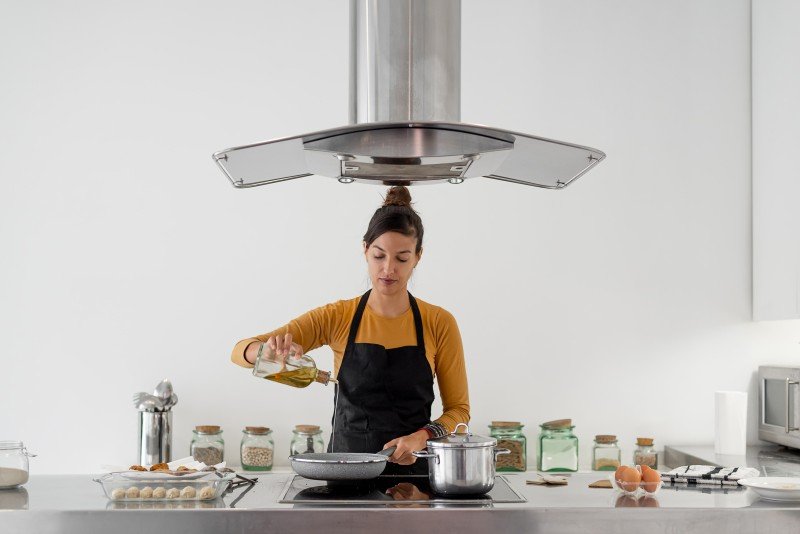Understanding Oven Hobs: The Heart of Culinary Crafting
In the realm of contemporary kitchens, the oven hob sticks out as an essential appliance. Not just is it a main component for preparing a range of meals, but it likewise influences kitchen looks, performance, and effectiveness. This short article explores the types of oven hobs, their functions, advantages, and maintenance tips. Additionally, it addresses some often asked concerns to offer a comprehensive understanding of this essential kitchen home appliance.
Kinds Of Oven Hobs
Oven hobs can be categorized into several types based on their energy source and style. Understanding these variations can help customers make informed choices when selecting the ideal hob for their kitchen needs.
1. Gas Hobs
Gas hobs use natural gas or gas as fuel, offering exact temperature level control and instantaneous heat. They are preferred by lots of chefs for their capability to offer visual feedback through flame.
Pros:
- Quick heat-up time.
- Precise temperature level modifications.
- Compatible with all types of cookware.
Cons:
- Requires a consistent gas supply.
- Security issues with open flames.
- Needs more upkeep.
2. Electric Hobs
Electric hobs are powered by electrical power and function smooth glass or ceramic surfaces. They often come in two types: coil and strong.
Pros:
- Sleek appearance.
- No open flames, decreasing safety threats.
- Easy to clean up.
Cons:
- Slower to warm up and cool down.
- May require specific cookware (induction).
- Some might have uneven heat circulation.
3. Induction Hobs
Induction hobs use electromagnetic energy to straight heat pots and pans. They just work with ferromagnetic pots and pans.
Pros:
- Very energy-efficient.
- Quick heating & cooling times.
- Safe, as the surface remains fairly cool.
Cons:
- Limited to specific types of cookware.
- Greater initial expense.
- Can produce sound when in use.
4. Solid Plate Hobs
These electric hobs feature solid metal plates that heat up and maintain heat for cooking.
Pros:
- Durable and reputable.
- Straightforward operation.
Cons:
- Takes time to warm up.
- Less efficient than induction and gas designs.
| Hob Type | Heat Source | Aesthetic appeals | Maintenance |
|---|---|---|---|
| Gas Hobs | Gas | Traditional | Moderate |
| Electric Hobs | Electrical power | Modern/Sleek | Low |
| Induction Hobs | Electromagnetic | Contemporary | Low |
| Solid Plate Hobs | Electrical power | Classic | Average |
Features to Consider When Choosing an Oven Hob
When choosing the perfect oven hob for your kitchen, there are several important functions to consider. These consist of:
- Size: Ensure the hob fits the designated space in your kitchen.
- Variety of Burners: Consider your cooking style and how numerous burners you'll need.
- Control Type: Look for easy to use controls, whether touch-sensitive or knobs.
- Security Features: Many modern-day hobs include precaution like flame failure gadgets or kid locks.
- Energy Efficiency: Choose energy-efficient designs to conserve on energy bills and decrease your environmental effect.
Benefits of Using an Oven Hob
The oven hob provides several benefits that cater to both amateur cooks and expert chefs. Here are some essential advantages:
- Versatility: Whether boiling, frying, simmering, or sautéing, an oven hob accommodates numerous cooking techniques.
- Convenience: Many hobs featured extra functions like timers and automatic shut-off systems for included convenience in hectic kitchen areas.
- Boosted Cooking Control: The instant heat actions of gas and induction hobs allow for much better control over cooking temperatures.
- Style Enhancement: Modern hobs can boost the overall visual of a kitchen, adding a modern touch.
Maintenance Tips for an Oven Hob
To make sure the durability and effectiveness of an oven hob, proper upkeep is crucial. Here are some upkeep suggestions:
Regular Cleaning:
- Use a soft cloth and mild detergent to tidy surface areas after each use.
- For induction and ceramic hobs, prevent abrasive cleaners to avoid scratching.
Look for Wear and Tear:
- Inspect rubber seals and connections in gas hobs frequently for any damages or leaks.
- Guarantee electrical connections are safe and secure in electric hobs.
Expert Servicing:
- Schedule regular maintenance talk to a qualified professional to prevent significant concerns.
The oven hob is an essential element in any kitchen, functioning as a focal point for culinary endeavors. Whether selecting gas, electric, or induction, understanding the numerous types, functions, and upkeep requirements is necessary for making an educated decision. A well-chosen hob not just enhances cooking efficiency but likewise improves the general kitchen experience.
Regularly Asked Questions (FAQs)
1. What Ovens And Hobs of hob is best for a newbie?
Electric hobs are typically favored by novices due to their ease of use and upkeep.
2. Can I utilize all cookware on an induction hob?
No, induction hobs require ferromagnetic cookware for them to work properly.
3. How do I know if my gas hob is working effectively?
Regularly look for even flame distribution and listen for any hissing noises that may show leaks. If in doubt, speak with a professional.
4. Is a greater cost always much better for hobs?
Not necessarily. While higher-priced models may use advanced functions, numerous mid-range products supply outstanding efficiency and longevity.
5. Can I set up a hob myself?
It is suggested to hire a professional, specifically for gas hobs, due to safety concerns and regional regulations.
By comprehending the subtleties of oven hobs, home cooks can make a knowledgeable decision that lines up with their culinary ambitions and kitchen styles. Choosing the ideal hob improves both the cooking experience and kitchen visual appeals, making it a key financial investment for any home.

